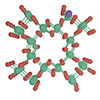| Jul 18, 2025 |
Machine learning accelerates catalyst discovery by combining theory, AI, and experiments to identify efficient materials for sustainable energy applications.
|
|
(Nanowerk Spotlight) The integration of machine learning (ML) into materials science is rapidly transforming the way researchers discover and design advanced materials. Moving beyond traditional trial-and-error experiments and even first-principles simulations, ML offers a data-driven approach that can significantly accelerate the identification of materials with desirable properties. By combining ML algorithms with state-of-the-art computational techniques and experimental validation frameworks, scientists can more efficiently screen candidates with high activity, stability, or functionality.
|
|
This emerging paradigm not only enhances the speed of materials discovery but also enables rational design strategies in areas such as catalysis, energy storage, and functional materials development. As machine learning continues to evolve, it is poised to reshape the landscape of materials innovation and open new frontiers across scientific and industrial domains.
|
|
A recent breakthrough by Prof. Zhongfang Chen’s team introduces a novel integration of density functional theory (DFT) with a progressive learning strategy within an active learning framework. This innovative approach enhances the predictive power of machine learning models by using adsorption energies as auxiliary features, significantly improving the sensitivity toward rare but highly active catalyst candidates.
|
|
Through high-throughput screening of 261 transition metal single-atom doped metal oxides (MSA-MOx), the team identified nine top-performing catalysts with theoretical overpotentials below 0.5 V. Among them, MnSA-RuO2 and FeSA-TiO2 stood out with remarkably low theoretical overpotentials of less than 0.3 V. Data mining further revealed key theoretical descriptors governing oxygen evolution reaction (OER) activity, while electronic structure analysis pinpointed intermediate binding strength as a critical performance-driving factor.
|
|
Further constant-potential DFT calculations, combined with experimental validation, confirmed that MnSA-RuO2 delivers low overpotential and excellent durability under acidic conditions. This integrated framework—bridging theoretical modeling, machine learning predictions, and experimental evaluation—marks a significant step forward in accelerating the discovery of efficient OER catalysts.
The full study has been published in Angewandte Chemie International Edition (“Progressive Learning‐Guided Discovery of Single‐Atom Metal Oxide Catalysts for Acidic Oxygen Evolution Reaction”).
|
|
Artificial intelligence is rapidly transforming the landscape of scientific discovery, reshaping how we understand and design materials. The impact is already profound—both the 2024 Nobel Prizes in Physics and Chemistry recognized AI-driven advancements. “The next wave of scientific breakthroughs will be deeply rooted in AI,” says Dr. Liangliang Xu, a postdoctoral researcher in Prof. Zhongfang Chen’s group and the first author of this study.
|
|
Yet, when it comes to AI-powered materials prediction, many challenges persist. Inaccurate initial datasets, inconsistencies between theoretical models and experimental data, and the inherently “data-hungry” nature of machine learning algorithms can all lead to significant prediction errors. These discrepancies often result in theoretically high-performing materials that fail to deliver in the lab.
|
|
To address this, Dr. Xu and colleagues turned their attention to predicting OER activity in transition metal oxide-based single-atom catalysts under low-data conditions. “In typical scenarios, researchers respond to poor model performance by adding more data or switching to different machine learning algorithms, which can be computationally expensive and inefficient,” Dr. Xu explains. “Instead, we focused on the fundamental driving forces of catalysis.”
|
|
Guided by the Sabatier principle—which states that catalytic activity is intrinsically governed by the interaction between the catalyst and reaction intermediates—the team adopted a progressive learning strategy. Rather than directly predicting activity from raw structural features, they first trained models to predict adsorption free energies of key intermediates. These adsorption energies were then used as informative descriptors in a second-stage model to predict overall catalytic activity.
|
|
This two-step, progressive learning framework resulted in a dramatic improvement in prediction accuracy—nearly 50% higher than traditional approaches. High-throughput screening of 261 MSA-MOx identified nine top candidates with theoretical overpotentials below 0.5 V. Among them, MnSA-RuO2 and FeSA-TiO2 exhibited outstanding theoretical performance, with overpotentials under 0.3 V. Subsequent validation using constant-potential DFT calculations and experimental evaluation confirmed the excellent activity and durability of MnSA-RuO2 under acidic conditions.
|
|
“Our goal was to sharpen AI into a tool that truly understands catalysis, rather than just recognizing patterns,” says Prof. Zhongfang Chen. “By rooting machine learning in the physical essence of catalytic reactions, we offer a more reliable path toward discovering efficient catalysts. This work exemplifies how thoughtful AI integration can bridge the gap between theoretical prediction and experimental success.”
|
|
Source: Provided by University of Puerto Rico
|
|
|
|
|


